Now that there are posters in archives doesn’t exactly count as hot news. But it’s worth revisiting nonetheless, for a couple of reasons.
One is that new delights can appear. It’s been said before, but I love the VADS archive as a model of how digitisation can work brilliantly. And every so often I go back and discover that items have been added. I’m sure I’ve never seen this Lewitt-Him ROSPA poster before as I would have remembered a puss in boots as fine as this.
Puss can be also found in the Jan Le Witt and George Him: Design book which is one of the vast backlog of books which I’ve failed to mention on here. Like every other title in this series I’ve seen, it’s a very good outline introduction to their lives and work. So that’s one down, unfortunately another three arrived this week.
Elsewhere, new archives spring up. I was moaning very recently that the Wellcome collection had a fine digital catalogue but no images. But now there is Wellcome Images. Almost an entire universe from germs to tattoo designs, but also containing posters. Which is where I found this. Once again, modernism is exactly the right style where progress can be celebrated – and a fall in infant mortality can only be good.
This very pure, almost continental modernist design is by Theyre Lee-Elliott, who I’d never come across before. But it turns out that he also designed the archetypal airmail wings.
As well as the Imperial Airways Speedbird logo, a design which endured beyond Imperial’s incorporation into BOAC and well into the time of British Airways.
Those two designs alone – both classics which survived well past World War Two and beyond – should have been enough to secure Lee-Elliott more fame than he currently has. But Lee-Elliott also designed some rather good posters. Some of these were expansions of his logo designs for Imperial and the GPO.
But he also designed a pair of really rather wonderful posters for London Transport in 1936 (from the wonderful LT Poster archive).
As well as these posters for Southern Railway, all from 1937 (from the more idiosyncratic NMSI archive).
A set of work which makes it all the more mysterious that he is not celebrated as one of the great modern designers in this country.
His later life may be one reason for this.
Although he designed one more poster for London Transport in 1952, he seems to have given up graphic design for fine art – in particular paintings of dancers. Here’s a brief biography as told by one of his nephews:
David Theyre Lee-Elliott went from Winchester to Cambridge and thence to The Slade School of art and lived in Chelsea all his life, dying at the age of 85 in 1988. He never married but had seven nephews and nieces. Before the war he painted the scenery and backdrops at Sadlers Wells and met all the stars and painted hundreds of action pictures of them. Whenever he came to stay he always painted pictures for us of our toys and where we lived during the war and after. A lot of his paintings were bought by the stars of stage and screen of yesteryear.
This recollection – as well as many others – came from a dance blog, Oberon’s Grove – which has articles on Lee-Elliott’s dance paintings (here and here) which are a worth investigating if you want to know more about the man.
But he did more than paint dancers – there’s an interesting commentary one of his paintings held by The Methodist Church Collection of Modern Christian Art (a new discovery for me) which describes his compulsion to paint religious imagery despite, apparently, having no religious faith.
I’m clearly just scratching the surface here; Theyre Lee-Elliott was clearly a very complex and unusual person – apparently he had a novel written about his life at some point too – and I find it extraordinary that he has disappeared so completely from the history books, at least as far as graphic design is concerned. So if anyone can shed any more light on his life and work, as ever, I’d love to hear from you.
This has rather digressed from the simple post about online archives that I’d intended when I started writing. But, in the course of it all, I did discover one more. The Smithsonian Museum in Washingon has a collection of Air Travel posters online, called Fly Now! which is worth some of your time. Or possibly quite a lot of your time, given that there are 1,300 or so posters in their catalogue.
The collection is brilliantly omnivorous too, containing everything from design classics to high kitsch. I will definitely have to come back to it one day when I’ve picked through it properly. But in the meantime, have some surprised llamas to brighten your Friday.
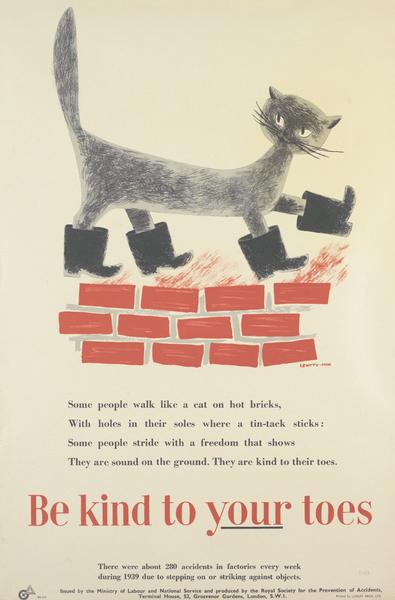
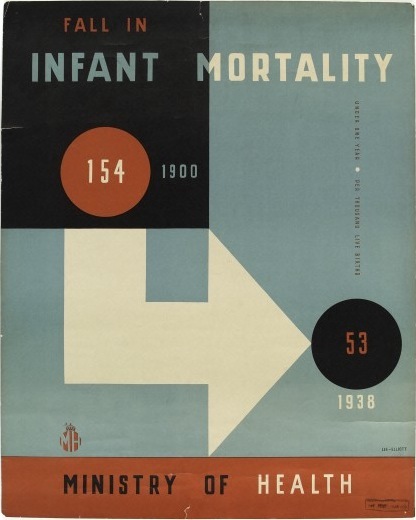


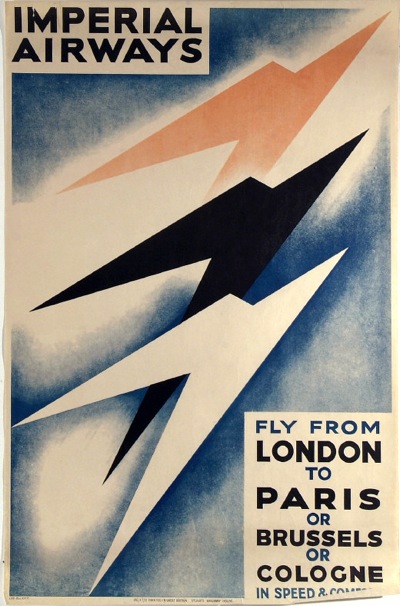
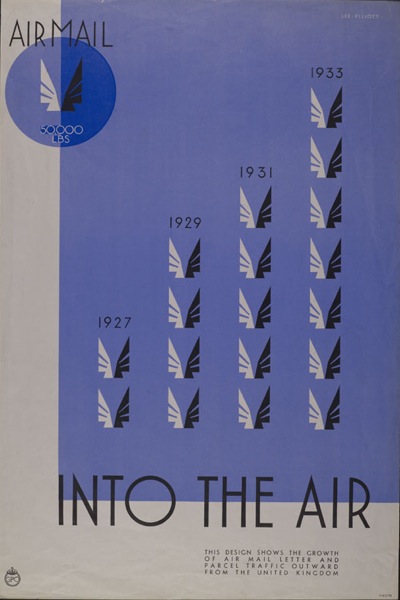
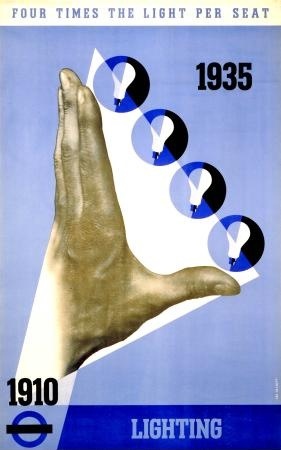
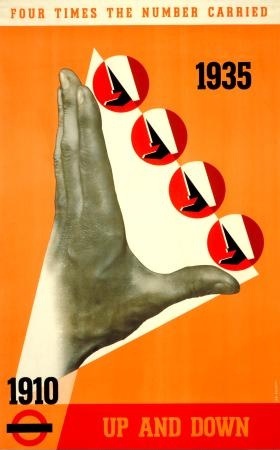
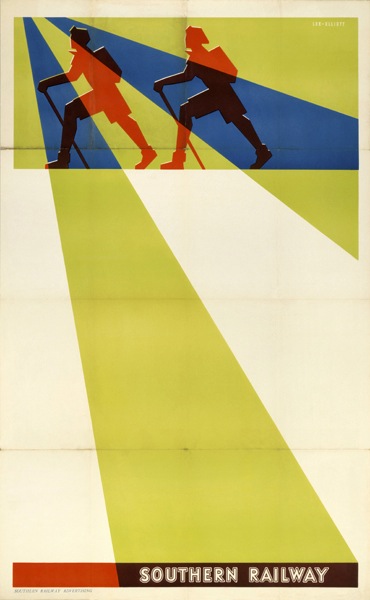
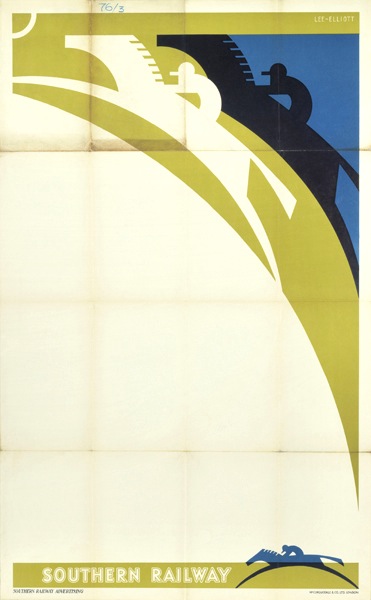
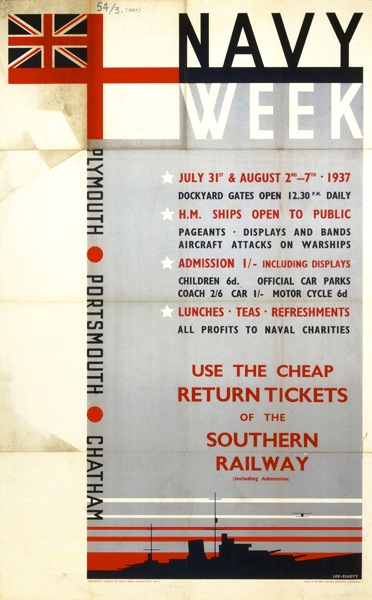
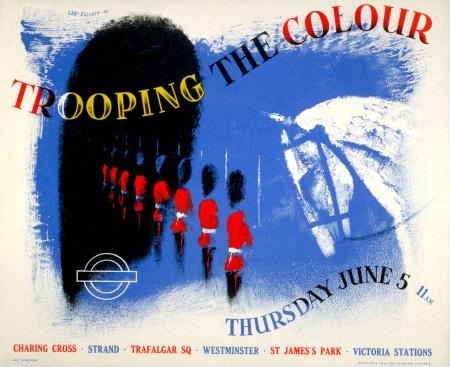
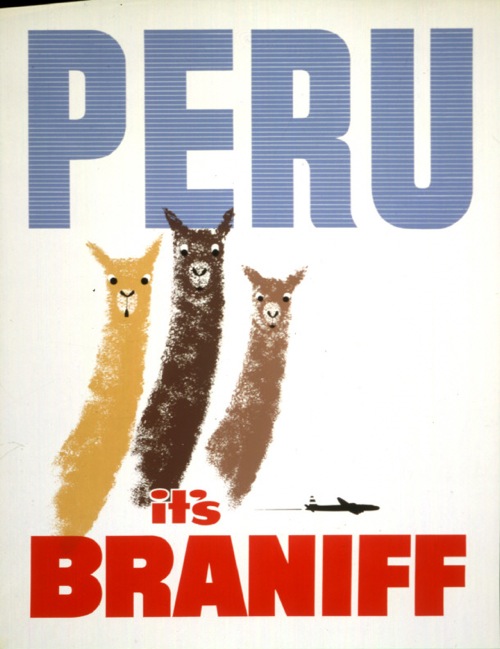
Fascinating links to Theyre Lee Elliott – very interesting.
Of course McKnight Kauffer knew him – although I don’t think they were friends. In the early 1930s McKnight Kauffer became a design advisor to the publishing and printing company, Lund Humphries (12 Bedford Square). Working with E.C. Gregory, the joint managing director of LH, they established a series of exhibitions which featured the work by the cutting edge graphic designers and photographers of the time, held in a specially designed exhibition showroom (designed by the architects Stanley Hall, Easton & Robertson) Lee Elliott was included in a group exhibition (also included Edward Bawden and Rex Whistler) of commercial design work in 1934 and was given a solo exhibition in 1937.
That’s really interesting, thank you. More and more I wonder how he came to fall out of design and graphic history.
Is there a list of these exhibitions anywhere? It would be interesting to see whether there were other designers of a similar calibre who have also been forgotten.
I’m always put off that Lewitt-Him book because it’s just too damn small to do any of the images the justice they deserve!
I love those llamas.
btw your readers might be interested to know that the book on Hans Schleger is currently only a fiver in the V&A shop right now — that’s £35 off the cover price! It’s a beautiful book, too.
No there isn’t a published list of the exhibitions – but McKnight Kauffer promoted both Hans Schleger (Zero) and Lewitt-Him by giving them exhibitions too. Of course Austin Cooper , too, faded into obscurity (as regards his graphic design work) after the second world war. He gave up commercial art (and of course his job as Principal of the Reimann School had gone) to concentrate on abstract art. He became a reclusive bohemian!
Anna – yes, I agree about the size, but I think I’d still rather have that than nothing – and it’s a reasonable stab at a short biog too, rather than waffle. So things could be worse. Thank you for the tip about the book though, I will stick that in the main text on Monday as everyone really should have one. And glad the llamas are amusing you as much as they did me. There’s a lot of kitsch in that archive, I’ll be back.
Dr G – thank you for that, much appreciated. I didn’t know Austin Cooper had given it all up for art too? The graphic designers who go on contentedly working into a ripe old age are few indeed.
Hello to everyone
In Praise of Small Books
Small books (Lewitt Him etc) provide a starting point and introduction to themes and material that has, in larger formats, been considered too risky to publish. The market for
poster history books is pretty small. (Note that the Lewitt Him website has received 3541 visits).
Publishers hate risk. In many cases the costs of publication are shared between the publishers and authors. Small books provide a way of testing the water. Big books with non-standard formats and art-direction are correspondingly more expensive. Also, the bookshops don’t really know what to do with them. Shelf space is a crucial consideration.
The fate of expensive, big, books is clear from Anna’s comments above!
Obviously, small books can never be complete or definitive. Brilliant, someone else can have a go and add to the sum of human knowledge.
Sustaining a Career in Graphic Design
Actually, most designers have failed to do this! Even Cassandre and Kauffer struggled after WW2. Most human beings are pretty bad at sustaining anything (piano etc?).
In design, it’s partly to do with the relatively small size, before the very recent past, of the creative economy. Even now, the creative sector is made up of lots of small parts. That’s good. Except that it’s the big bits of the economy that sustain over time!
It’s partly to do with being self-employed at small-trader level. And it’s partly to do with how communication design re-invents itself and develops new styles and new ways of working.
In the 1930s the patrons of design were usually individuals in big organisations. Personal contacts were important. But these can end arbitrarily. Nowadays, there is more of a system in place (especially in big organisations) to maintain a consistent delivery of design output. That’s new and it should make it easier to sustain a career in design.
Design Biography
I think there is a limit to the usefulness of detailed design biography!
We’re looking at work, not lives. Obviously, there are points of interconnection. But, unlike fine art, we can’t really say that the GPO volume-of-traffic posters wouldn’t have been designed if TLE hadn’t lived. They would have been different, but they would still have been required by the organisation and system.
In view of the templates and standards that define successful design at any time, it is not even obvious that anyone else would have designed these things that differently.
This takes us back to Rick’s reflections (posted recently) on the relative under-development of graphic design history. Personally, I don’t think the discipline will develop an adequate understanding of its activities without this structural, or systemic, analysis.
Luckily, there is space for both approaches.
Paul – thanks for such a comprehensive comment.
How and why design careers end is a really interesting area, and one which is probably worth exploring. Because, in some creative areas, people do sustain; authors tend to keep on writing for as long as they can. While a lot of designers seem to give that up for fine art. Perhaps it’s the clients that they can’t deal with forever.
I agree that both personal and more general approaches are needed for design history. Because although the GPO poster would still have existed if Lee-Elliott hadn’t lived, that particular poster wouldn’t have, nor would the airmail wings. And in many ways I find the real interest sometimes lies in the details, and the close reading of one poster alone can be very revealing.
Theyre’s commercial designs were chosen because of their simplicity and effectiveness. He led a fairly uncomplicated and unmarried life and he did not have to paint. He must have done well at The Slade who may well have put him forward for such work. That work overflowed to the painting of the Covent Garden scenery and back drops and this to the befriending of the likes of Fontaine and Helpman. In those circles it spiralled to the likes of Charlie Chaplin and others and it was the stars who then clamoured for his paintings of themselves and others and that is how he dropped out of painting posters.
The war so disrupted everyone’s lives and he lost touch with his stage friends. He got away from Chelsea as much as he could during the Blitz and as children we encouraged him to paint every subject under the sun. This he did with gusto, taking up every challenge and succeeding so well. He was into new fields. His later exhibitions in New York, Paris and Tokio barely touched on the ballet but more on his travels. He did not look after himself and his health deteriorated somewhat and we were amazed that he lived to 85. Once, near death, he famously started his ‘Crucified Tree Form’ period, claiming that he had died whilst in an Amsterdam hospital and had witnessed Christ’s Crucifiction. The elder son of a vicar, he had gained a first class degree in Theology whilst up at Cambridge. Theyre also had tremendous imagination and a sense of humour that always made sure that he was welcome wherever he turned up. Never without his pipe and tools of the trade. Charcoal, pastiche, gouache and his unique crumpled tissue paper with undertones of nicotine applied with pipe cleaners which would negate the adherence of his normal brush strokes. This would give a 3D effect used most successfully when he painted underwater scenes of sealife. He was just as good painting animals as humans and from portraits to still life. To celebrate my birth, he produced a one-off children’s guide with paintings and rhymes to the Regents Park Zoo. I am in the middle of collecting downloads of his works and have photographed myself about 100 paintings and 50 posters within his relations and friends. More would be welcome.
Thank you so much for adding your memories, it’s very much appreciated. If anyone else has posters or other images I will pass them on to you.
Hello,
Interesting comments on Theyre Lee-Elliott. I have been trying to find out more about this artist, as I am aware of another Southern Railway poster of a diver similar to the two above. I recognise the two above from the V&A collection but have yet to find another example of the diver. I would be happy to share an image for any enthusiasts and grateful for any information.
Thanks,
David
I’d be really interested in seeing the poster t00 – if you sent it over I will add it to the blog and see what people think.
Later this month on the 18th, several relations of Theyre will meet in Sussex to discuss the CD that I have put together of his works. Some 80+ of his commercial works and over 400 of his paintings. Most of these paintings he gave away to his relatives, I suppose for his keep as he travelled quite freely between us all, especially during the war. Besides exhibiting in his native Chelsea, his agent sought sites for him in New York, Paris and Tokio. After each exhibition, he would paint local scenes, and characters and have the pictures framed and stored ready for a return exhibition some years later. A canny logistical move.
That’s fantastic to hear about, I’d love to see the commercial works you’ve put together if that’s ever possible.
I met Theyre Lee Elliott in 1964 in Tokyo. He was in the company of ‘A Potter in Japan’ Bernard Leach. An interesting combination who conspired to extend their visas on the grounds that they could see the Cherry Blossoms !
Theyre used to do what he called ‘Droodles’ which were drawn with the drool from his pipe and then given a wash to provide some colour on the reverse side of the tissue paper. He kindly gave me a number of these and other small sketch paintings which I have treasured to this day. He was still doing photographs with his box camera.
I used to visit his Chelsea room-at-the-top for chess evenings – and Ubolubov, of course. My last meeting with Theyre was at his Harlequin Exhibition in Chelsea.
Sorry not to be in England to meet Theyre’s friends and relatives – but I hope the TLE Society flourishes !
How fascinating, thank you for posting that. Theyre Lee Ellott and Bernard Leach in Japan sounds like the basis for a novel – and I wouldn’t have necessarily put them down as complementary personalities either, but clearly they were.
It was with joy that I found this information. I have a large ballet sketch, signed Lee Elliott, which was left to us. I really should find a home for it before I die. The sketch is simple, but so full of movement, so brilliant.
Thank you so much for getting in contact . I think the other blog that I mentioned in the post may be able to help you more with that.
Hello. I collect the author, Roderick Haig-Brown and am looking for information
on the illustrators of his books. The book, Panther, was illustrated by Theyre
Lee Elliott. I would like to find artwork from this book. Any ideas?
Thanks.
Bob Evans
This stuff about Theyre Elliott is interesting to me because I am in posession of some of his work. My grandparents were close friends of the artist in the later part of his life. They were given a large semi-abstract landscape based on the architecture of Venice. I also have three small works that were sent to them by Elliott, enclosed in letters or as Christmas cards.
I know almost nothing about his life, and would be grateful if anyone could dirct me to a good source of information about him?
I’m afraid that the links above are about the sum total of what I could find out about him, well those and the comments above. I hope you can find out more.
My Aunt nee Benn married Theyre Lee-Elliott’s brother Christopher April 1930 and had a Prep School in Dorset but divorced in 1937. I have a beautiful picture titled Tamara Toumanova in Concurrence with a note on the back by Theyre thanking her for looking after his dog.
That’s all the better for having the domestic detail as well!
Twenty years ago I purchased a painting by Theyre Lee-Elliott
With the Title “The Yellow Field”
I would give the painting I have another title which would be “The Yellow Cliff Face” which I think would be more appropriate.
I have two small gouaches by Lee-Elliott which might interest someone?
I have just bought a travel guide about London from 1939. Its cover is illustrated by Theyre Lee-Elliott.
Inside, there are some photos by Thea Struve (Dorothea Struve, 1905-1988), who was a german photographer and a close friend to Man Ray, Roland Penrose, Lee Miller and the Ustinov.
https://www.facebook.com/photo.php?fbid=1034423890010046&set=ms.c.eJwzNDA2MTEytrA0MDA0MDAx0zMEC5iYGhsbmxgbG5oCAG8ZBow~-.bps.a.941857032600066.1073741839.100003273354251&type=3&theater
I live in the Old Rectory, Blakeney, where Theyre Lee-Elliott must have spent much of his childhood before going up to Winchester. Also, my husband and I have long been huge enthusiasts for British inter-war art and design. Thus it is particularly fascinating for me to read both the family memories and also the reflections on Theyre’s work that have been posted on this page. Who knew that those ‘par avion’ wings — a truly iconic modernist image, sleek and assured – had any connection with a Norfolk parsonage?
Incidentally I am also mildly obsessed with finding out more about the clergymen who lived in our house — in particular, with Theyre’s father, the Rev. David Lee-Elliott. I have never managed to track down much about him. He was, for instance, responsible for a sensitive and intelligent re-ordering of this house, including building a fascinating Arts & Crafts study, as well as for commissioning the (new) rectory when the diocese sold off what is now the Old Rectory. Who was his architect? What was he like as a person? And why, most of all, did he give up Holy Orders in 1943?
It is in this context that I find Theyre’s obviously complex relationship with formal religion particularly compelling. He obviously thought about faith a lot, but for whatever reason, didn’t feel entirely comfortable within its conventional parameters. I’d dearly love to know more about him, as well as his father.
Thank you so much for finding this and taking the time to reply. Theyre seems to have been a very interesting designer, and one who’s attracted more comment than almost anyone else I have written about, and from a wide range of people too. I wish I too knew more about the complexities of his life.
I have just stumbled upon an original Theyre Lee-Elliott gouache on tissue paper in my local charity shop. They had taken advice and it is original and was priced as such but I still bought it as it is stunningly beautiful and I thought it can only be a good thing to give it a good home. It is called Japanese Lady in her Garden and labelled on the back in what looks like the artiste’s hand. The frame is old and tatty but the painting inside looks in good condition . If anyone can give me some information on this painting I would be most grateful.
I met Theyre several times in the early 70’s at the home of his niece, Claire. We got on well and played chess and painted easter eggs. I have a delightful little painting of his that he did for me as a Christmas card. If you are still in touch with any of his relatives and they are interested, I would send them a scan of it to add to the archives. I’d like to contact Claire too if that is possible.
I am the second daughter of Theyre’s sister Monica and he was a magical uncle to us. He loved to entertain. Life, through his eyes, was very special. He could see beauty in the most mundane of things.
He would visit us often and we him – we would play chess or scrabble, he would entertain my children and we would laugh – a lot! He loved to make up puzzles and rhymes for us all and always had some interesting anecdote to tell us.
Paul, it would be lovely to make contact but am not sure how?
Claire
The comments about Theyre Lee-Elliott are so interesting. My mother, Betty, was his housekeeper in Chelsea for years. He would always paint an egg for Easter for her, and paint birthday and Christmas cards. When my mother died I found an album full of small paintings he did for her – they were both obviously fond of each other. I still have this and the works are lovely. I didn’t know he originally trained as a graphic designer, which is interesting, as I’ve worked in graphic design and my husband is a graphic designer!
He seems to have been the kind of person who inspired really lovely memories in people and the more I find out about him, the more I want to know. He’d be the great subject for a biography.